DMM Keysight 34461A 6½ digit
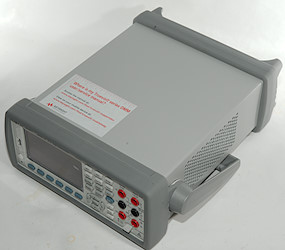
This is a fairly expensive 6½ digit bench multimeter from a top quality brand.
This meter has many possibilities and I will not cover everything it can do.
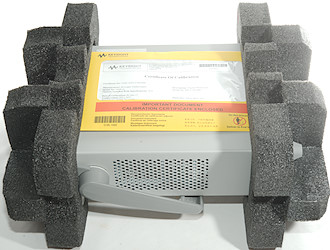
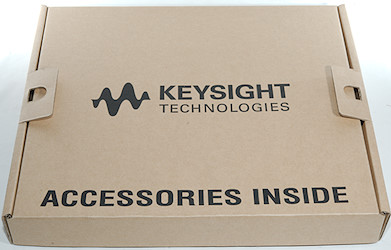
It arrives in a big very solid cardboard box with the DMM well protected inside and a box with all the accessories.
It includes a calibration certificate, this list the reading and the error at many different calibration points and the date this was measured.
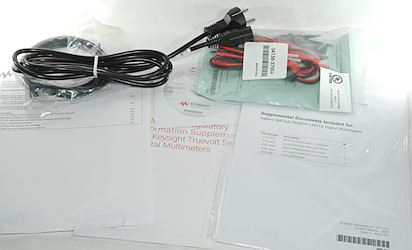
In the accessories box is probes, mains cable, CD with manual and a bit of documentation. The manual can be downloaded from Keysight (It is nearly 600 pages in English).
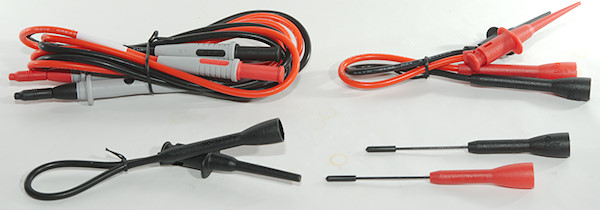
The probes includes a few accessories.

Standard probe, note that this probe is a fairly low safety rating, like the DMM (CAT II).

With extended probe tip.

With hook.
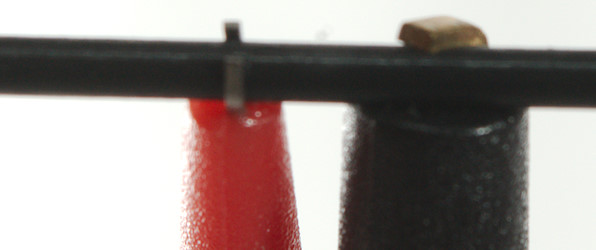
There is two types of hooks included.

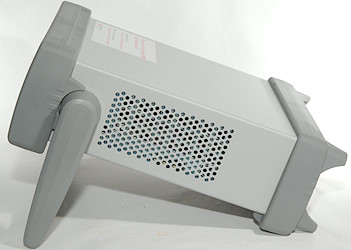

The meter can be used in multiple position, the flat position is often used to stack it with other equipment. It can also be used floor standing. It is possible to buy a bracket for mounting one or two meters in a rack.
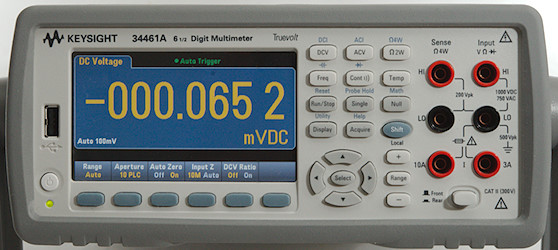
The front has the display, the buttons and one set of inputs.
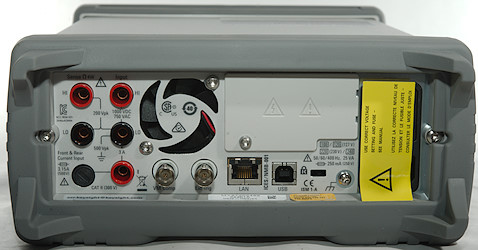
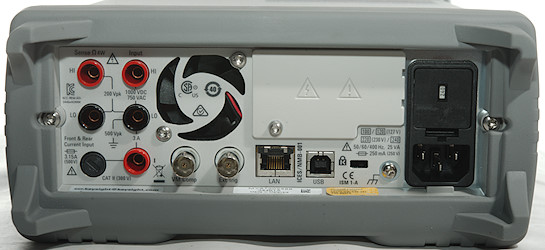
On the back is another set of input and a few other connections, including the mains input.
There is also a cover for the optional GPIB interface.
Display
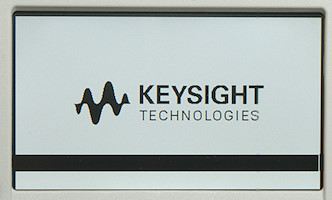

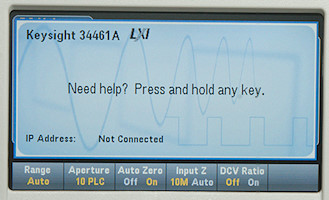
This meter is a computer that needs some time to boot and do self test, during that time it shows a couple of boot screens.
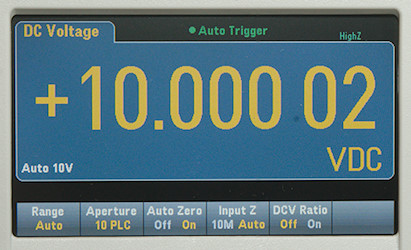
Typical display when measuring without any of the more advanced stuff activated.
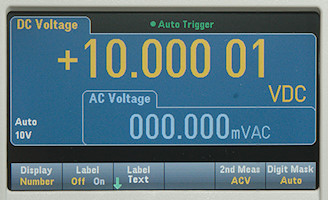
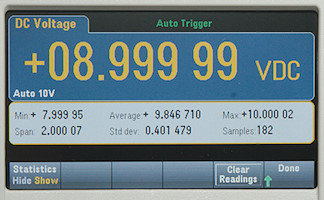
Secondary display enabled and showing AC (When showing DC & AC a relay inside the meter will toggle). The statistic can show max/min/average and a bit more.
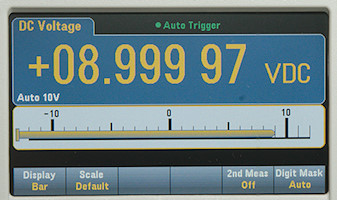
A bar can be added to the display.


There is also some modes where it shows the data graphically.
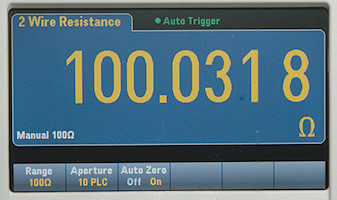
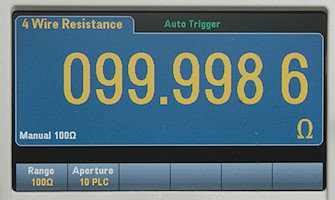
Ohm can be done both as two wire or four wire, difference here is about 30mOhm due to the cables.
Functions
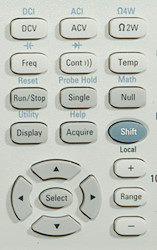
- DCV/DCI: Select DC voltage or DC Ampere if Shift is pressed first.
- ACV/ACI: Select AC voltage or AC Ampere if Shift is pressed first.
- Ohm2W/Ohm4W: Select ohm with two wire or with four wire if Shift is pressed first.
- Freq/capacitance: Select frequency or capacitance if Shift is pressed first.
- Cont/Diode: Select Continuity or diode if Shift is pressed first.
- Temp: Select temperature measurement (This do not support thermocouplers).
- Run/stop/reset: Start/stop measuring or reset meter to factory settings if Shift is pressed first.
- Single/Probe Hold: Take a single measurement (Used after stop is pressed) or enable auto hold if Shift is pressed first.
- Null/Math: Enable relative measurement or min/max/average (Math can do more than that) if Shift is pressed first.
- Display/Utility: Modify display with bargraph, trend chart or second display. If Shift is used it is possible to change configuration.
- Acquire/Help: Trigger, number of measurements, saving of measurements. There is also some help available (Holding any key down will show help for that key).
- Shift: Select the function listed above the key.
- Arrows: Adjust settings.
- Select: Select value adjusted with arrows.
- +/range/-: Shortcut to select manual/auto range and select range.

The buttons beside the screen select the basic function, all adjustment and settings are done with these 6 soft keys. There are settings for each function (DCV/DCI/ACV/....). Display do also have many interesting settings for the different function.
The Probe Hold, Math, Utility and Acquire have more general setting, many of them related to the actual measurements.

On the other side of the display is the power button, this is a soft power button.
The usb connector can be used to save settings and screen captures.
Input
The inputs are only CAT II 300V rated, i.e. the meter is not designed for installation and service on electric installations.
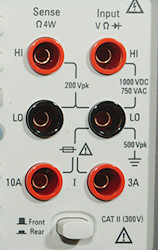
- Input HI: The voltage, frequency, capacitance, diode and ohm positive input.
- Input LO: The voltage, frequency, capacitance, diode and ohm negative input.
- Sense HI: Four terminal ohm and voltage ratio positive input.
- Sense LO: Four terminal ohm and voltage ratio negative input.
- 3A: Low current range, it is not recommend to use it up to 3A, it has very high burden voltage.
- 10A: High current range.
- Switch: Select between this set of input terminals and the rear terminals.
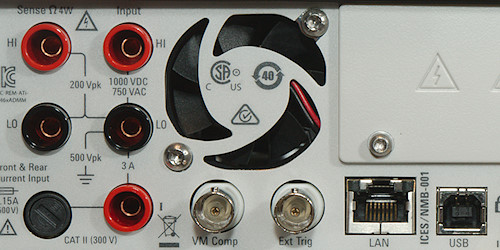
Rear input terminals, the 10A input is replaced with a fuse for the 3A range. This is a "normal" 20mm fuse (Inside the meter is a big high current 3A fuse).
The trig input is used to start a measurement (Usual it will start automatic) and "VM Comp" signals when a measurement is done.
The LAN and USB connectors is for controlling and reading values from the meter.
Measurements
- Volt and frequency
- At 10mVrms frequency input range is from 1Hz to 490kHz
- At 1Vrms frequency input range can be stretched to 920kHz
- Frequency input do not require a zero crossing.
- 1 VAC is 5% down at 320kHz, rms will not work at this frequency
- Frequency can be selected as secondary display in AC ranges.
- AC voltage can be selected as secondary display in DC ranges (A relay will toggle).
- Input impedance is 10Mohm on DC and AC
- DC ranges below 12V can be set to high impedance.
- Current
- AC current can be selected as secondary display in DC ranges (A relay will toggle).
- Frequency can be selected as secondary display in AC ranges.
- The 3A range is for combability with an old model, use 10A instead.
- 3A and 10A ranges is protected by two 11A/1000V 10x38mm fuse.
- 3A and lower ranges is protected with a 3.15A/500V 5x20mm time delay ceramic fuse in addition to the large fuse.
- Ohm, Continuity, diode and capacitance
- Ohm needs about 1.2s to measure 100ohm in default configuration.
- Ohm is 10.7V open (100M range is 5V) and 1.0mA shorted
- Continuity is very fast (Less than 3ms).
- Continuity beeps when resistance is below 10ohm.
- Continuity is 10.7V open and 1.0mA shorted
- Diode range uses 10.7V, max. display is 5.0V at 1.0mA, max. current is 1.0mA shorted
- Miscellaneous
- Power consumption when on 9 watt
- Power consumption when off 0.5 watt
- The meter reach final value in one to two readings.
- Viewing angle is good.
- Display update speed depends on settings.
- Maximum measuring speed is 1000 readings/second (At high speed it will have less digits).
- Weight is 3760g without accessories.
- Size is 300 x 262 x 105mm
- Probes
- Probe resistance 22mOhm for one.
- Probe wire is very soft and 120cm long.

A look at the capacitance measurement waveform.

Software

A installed meter will show up in device manager as a "USB Test and Measurement Device".
No software is included with the meter, but there is a manual describing how to communicate with it.
Keysight sells a software that can integrate all of their advanced instruments, it is called "BenchVue". The licensing of this software is fairly advanced with payment for instrument types, functions, period.

When starting the software it shows all the equipment it can find, double click on something to use it.

But you cannot just use it, a special application for the type device must first be downloaded and installed, this is basically automatic and you get a trial period, but to continue using it a license fee must be paid.

One multimeter is started, I can control the settings and see the actual value on the meter.
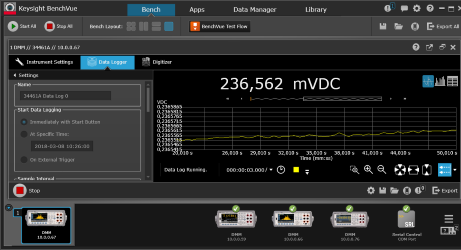
Or I can switch to the data logger.
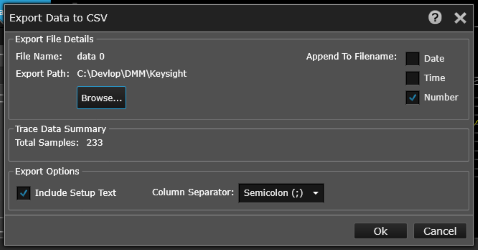
The data can be exported as screen dump or CSV files.

The CSV file uses the correct format (For my location) and includes a header with some information about the meter and settings.
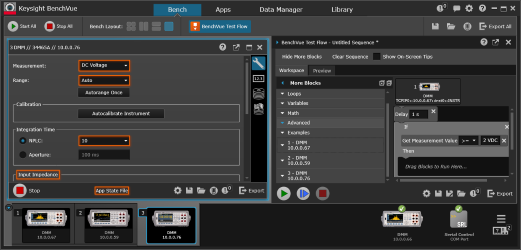
In BenchVue it is possible to run many instruments simultaneous and make scripts (With blocks) for automating tests.

When doing your own software it is possible to use Keysight Command Expert to help building the commands. This software can also work in demo mode, i.e. without any instruments connected to the computer.
Before it can be used Keysight IOLibSuite must be installed, including a license manager. Both software packages are free.

The software knows all commands each instrument supports (It will download a file for it) and it is possible to visually build configuration and queries for a instrument.

The result can then be exported in a couple of formats.
Tear down
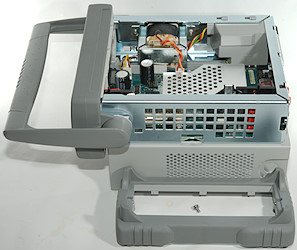
3 screws and the cover could be removed.
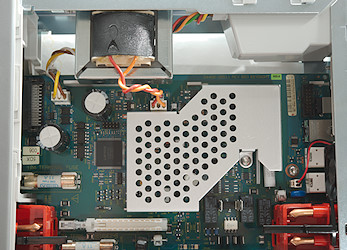
On the circuit board the front/back switch can be seen and the two large fuses for the current range.
There is some relays to switch between functions.
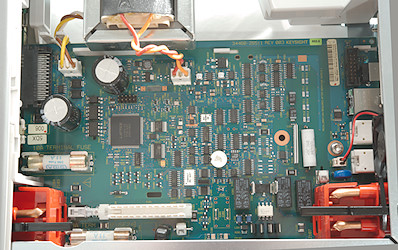
The shield over the circuit board can be removed with one screw (It is a bad idea to touch the circuit board). The white round device on the circuit board is the voltage reference.
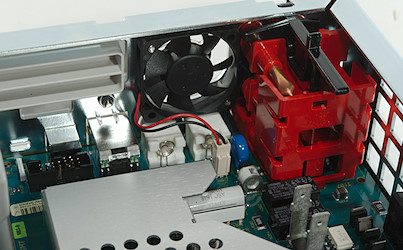
A closer look at the backend, there is a connector for the GPIB interface.
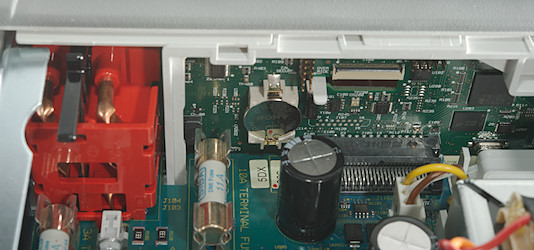
Behind the front panel is some electronic and a battery for the real time clock.
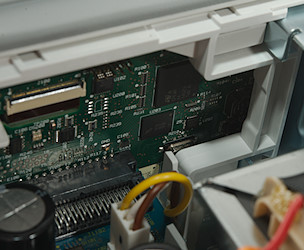
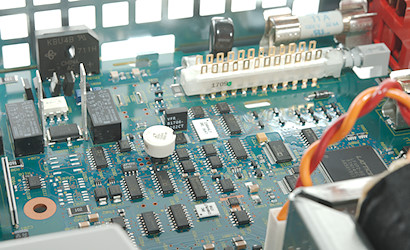
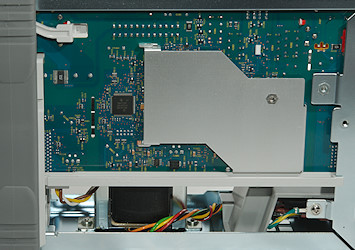
There is a single big chip on the bottom of the circuit board and again it is shielded.
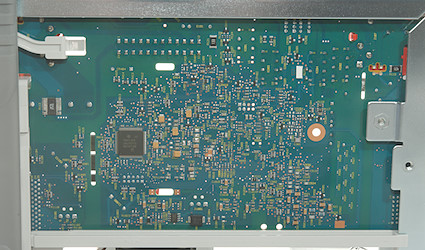
This shield is removed with the same screw as the top shield.
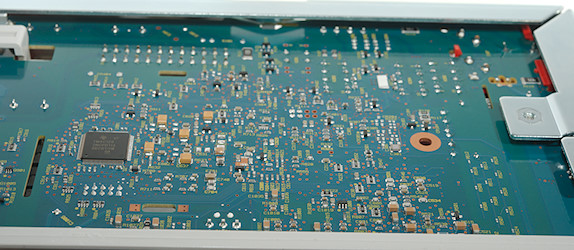
Conclusion
Bench DMM's is fairly expensive, this model is at the cheap end for good bench meters from a premium brand. What you get with the bench meter is precision, connectivity, speed and some functions that is missing from handheld DMM's (It is also missing some functions that are common on handheld meters). The range with best precision on DMM's is the DC voltage, current and AC has less precision. On this meter capacitance is an afterthought (It was not even present on the first batch).
Generally benchmeters are only CAT II 300V rated, they are not supposed to be used "out in the wild".
I like this meter and compared to a top of the line handheld DMM it is not that expensive but can do much more.
Notes
Keysight has four bench multimeters: 34460A, 34461A, 34465A and 34470A, each higher number has a bit better precision and a few more functions. For all of them it is possible to buy more functions (But you cannot buy upgrade to next model).
I uses a couple of these meter for many of my tests together with some software I have written.
How do I review a DMM
More DMM reviews





















































